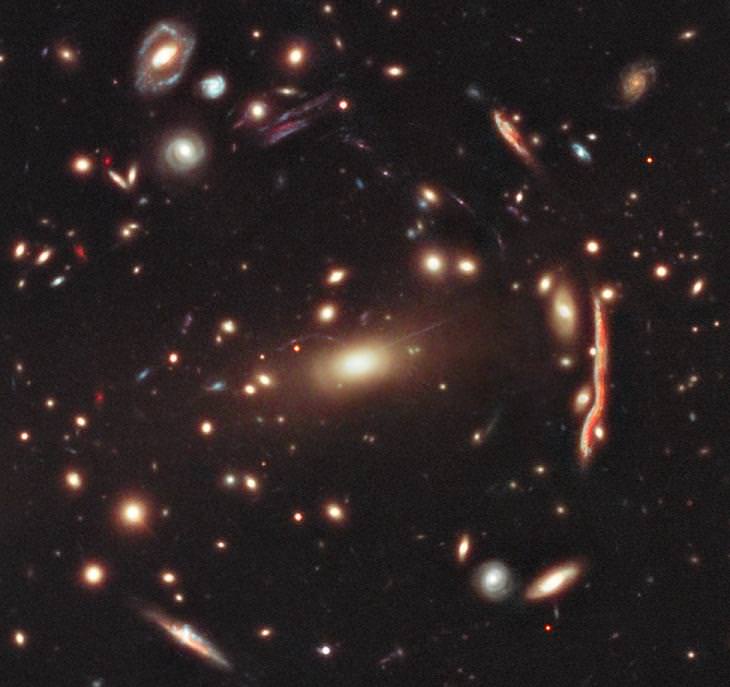[/caption]
Way off in the constellation of Virgo, galaxy cluster MACS J1206.2-0847 -or MACS 1206 for short – is making news as the forerunner of a brand new Hubble Space Telescope survey. What’s new for the aging telescope? Now astronomers are able to assemble a highly detailed dark matter map… one that involves more galaxy clusters than ever before.
These “dark matter” maps are proving their worth by allowing astronomers to test some theories. In this case, it’s some unusual findings which suggest dark matter is more densely packed inside galaxy clusters than some models predict. If this holds true, it may point to evidence that galaxy clusters pulled together sooner than once predicted. The multiwavelength survey, called the Cluster Lensing And Supernova survey with Hubble (CLASH), takes an unprecedented look at the distribution of dark matter in 25 massive clusters of galaxies.
“The era when the first clusters formed is not precisely known, but is estimated to be at least 9 billion years ago and possibly as far back as 12 billion years ago.” says the Hubble team. “If most of the clusters in the CLASH survey are found to have excessively high accumulations of dark matter in their central cores, then it may yield new clues to the early stages in the origin of structure in the universe.”
To date, the CLASH team has finished their observations of six of the 25 clusters. Of these, MACS 1206 has a distance of about 4.5 billion light-years and was photographed with Hubble’s Advanced Camera for Surveys and the Wide Field Camera 3 in April 2011 through July 2011. What are the strange shapes? These “distortions” are where the light is bent by the extreme gravitation of dark matter.
“Lensing effects can also produce multiple images of the same distant object, as evident in this Hubble picture. In particular, the apparent numbers and shapes of distant galaxies far beyond a galaxy cluster become distorted as the light passes through, yielding a visible measurement of how much mass is in the intervening cluster and how it is distributed.” says the team. “The substantial lensing distortions seen are proof that the dominant component of clusters is dark matter. The distortions would be far weaker if the clusters’ gravity came only from the visible galaxies in the clusters.”
Original Story Source: Hubble News Release.

